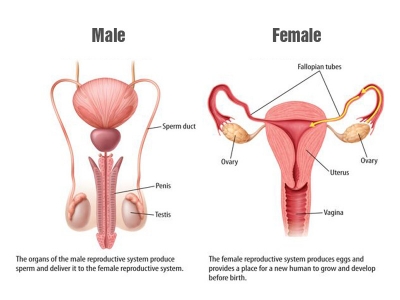
A woman’s reproductive organs sit inside her body. They consist of the uterus, two ovaries and two fallopian tubes, the vagina, the breasts, and the milk-producing glands. The male reproductive system is much simpler, and most of it is outside the body. It manufactures and provides sperm to fertilize the female egg.
Female reproductive system
Secretory lobule
These tissues contain clusters of milk-producing glands called alveoli. These alveoli join to form groups known as lobules. Each lobule has a lactiferous duct that drains into openings in the nipple.
Milk duct
Many of these tiny tubes carry milk from the glands to the nipple. Each gland consists of a series of lobules, or glands that produce milk. They connect to ductal lobes, which connect to the lactiferous ducts.
Nipple
The nipple is the opening of the milk ducts, where the baby sucks out milk. These ducts are lined by stratified squamous epithelium near the opening and the lumens are frequently filled with desquamated cells. Deeper in the connective tissue, the ducts acquire a stratified columnar appearance that is really a cuboidal duct cell sitting on a myoepithelial cell as in the sweat gland.
Fallopian tube
This tube connects the ovary to the body of the uterus. Eggs are fertilized here. They lie in the upper border of the broad ligament, extending laterally from the uterus, opening into the abdominal cavity, near the ovaries.
Uterus
Uterus, also called womb, an inverted pear-shaped muscular organ of the female reproductive system, located between the bladder and the rectum. The stretchy uterus is where fertilized eggs develop.
Ovary
Ovaries are the female gonads — the primary female reproductive organs. These glands have three important functions: they secrete hormones, they protect the eggs a female is born with and they release eggs for possible fertilization. The two ovaries are where eggs stored and released.
Fimbriae
These feathery tails sweep the ovary and draw eggs into the fallopian tube. As there is no direct connection between the ovaries and fallopian tubes (also known as uterine tubes or oviducts), the egg is transported to the uterus in a peritoneal fluid produced by the fimbriae on the edge of the tube’s opening.
Myometrium
The myometrium forms the chief bulk of the substance of the uterus. In the virgin it is dense, firm, of a grayish color, and cuts almost like cartilage. The muscle of the uterus is smooth and strong.
Cervix
This is the opening of the uterus. The cervix is the lower portion of the uterus, an organ of the female reproductive tract. It connects the vagina with the main body of the uterus, acting as a gateway between them.
Endometrium
The lining of the uterus thickens to receive an egg, then sheds if the egg is not fertilized. Also called the endometrial lining, the tissue it’s made up of serves as the “wallpaper” of the uterus, or womb—the pear-shaped organ that houses a developing baby.
Vagina
This muscular tube goes from the uterus to the outside of the body. It’s where the penis is inserted during sexual intercourse. It’s the pathway (the birth canal) through which a baby leaves a woman’s body during childbirth.
Male reproductive system
Vas deferens
The vas deferens is a long, muscular tube that travels from the epididymis into the pelvic cavity, to just behind the bladder. This muscular tube carries sperm from the testes to the urethra.
Seminal vesicle
The seminal vesicles are sac-like pouches that attach to the vas deferens near the base of the bladder. Fluid released here mixes with sperm cells to make a liquid called semen.
Penis
The penis is the male organ for sexual intercourse. It has three parts: the root, which attaches to the wall of the abdomen; the body, or shaft; and the glans, which is the cone-shaped end of the penis. The penis transfers sperm to the woman’s vagina.
Urethra
The urethra is the tube that carries urine from the bladder to outside of the body. This tube carries sperm and urine out of the penis.
Testes
Also called testicles, they manufacture sperm, the male sex cells. The testes are oval organs about the size of very large olives that lie in the scrotum, secured at either end by a structure called the spermatic cord.
Scrotum
The scrotum is the loose pouch-like sac of skin that hangs behind the penis. It contains the testicles (also called testes), as well as many nerves and blood vessels. This protective casing of skin and muscle covers the testes.
Picture Credit : Google



